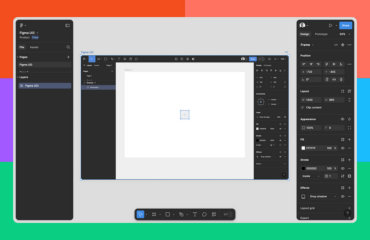Knowing when to run a workshop is as important as knowing how to run a workshop

I love workshops. I love discussions that end in tangible to-do lists. I love a defined structure. I love creativity within that structure. I love ‘alignment.’ I love cheerfully winning over the biggest skeptic in the room. I love being the bad guy with the loud timer. I love ‘activities.’ I love it all.
Well, almost.
I hate unnecessary meetings. I hate smiling through gritted teeth as I force teams through pointless activities. I hate waffling. I hate when a workshop becomes about the appearance of work instead of just doing work. Most of all, I hate wasted time.
Workshops can either speed up decision-making or add painful bloat to the process. There have been times when I found myself facilitating a workshop that could have been an email — or even worse, a Slack message. This enthusiasm for workshops is understandable. As humans we’re social creatures, and decisions are hard. Why take a risk when we can debate it endlessly instead? Why generate ideas myself when I can rely on others to do it for me? Why make a decision now when we could do a workshop, and then make that decision in a month?
There seem to be two distinct camps: those who are ready to workshop at the slightest notice (Enthusiasts), and those who would rather do anything rather than write on a sticky note (Skeptics). Each camp makes its case clear: workshops foster collaboration vs. workshops foster wasted time.
As a workshop Moderate, I embrace both sides of the Enthusiast vs. Skeptic debate. Workshops shouldn’t be wielded like mallets, but instead, like precise surgical tools that are useful in particular circumstances. With this perspective in mind, ‘When to workshop?’ is a more complicated question than an Enthusiast or Skeptic would like to believe.

What is a workshop?
Before we get to ‘when’ we need to first understand ‘what.’ A workshop can be defined in several ways, but let’s make one thing clear: a workshop is not a focus group.
A focus group brings a collection of people together to share their opinions with a facilitator. There are countless articles that explain why focus groups suck when it comes to UX research. The short of it is: they’re rife with unavoidable bias.
A workshop, in contrast, is an engineered meeting. Like carpenter or blacksmith workshops, things happen in a UX workshop. Workshops can inspire ideas, decisions, or alignment. They’re a collection of people coming together at a specific moment in time to do something.
All good workshops have a few things in common.
A good workshop is clear.
The goal, timing and activities of a workshop should make sense to participants. People should be able to say ‘oh, okay’ and relax back into being proactive participants instead of jostling the facilitator for power in the room, or worse, disengaging entirely.
A good workshop has the right people in the room.
Do we need the CEO’s perspective to move forward, or would they make it difficult for others to share their ideas? Does it make sense for the development team to be included at this point in the process? Should we cap the workshop at 10 participants, or 20? The goal for your workshop will inform the answers to these questions. Be warned though — the ‘who’ of your workshop is critical to its success. The wrong people, or too many, or too few, and you risk an outcome that doesn’t lead to action. The right people need to be present for your workshop to have impact.
A good workshop is structured — but not too structured.
A rookie mistake in workshop facilitation is sticking too closely to the script if the structure needs to be modified halfway through a session. Activities should have a clear role in the workshop flow, but if through Activity 1, you find that Activity 2 and Activity 3 should swap spots, do it. The goal of a workshop isn’t to survive the next 90 minutes. The goal is to get the information you need.
A good workshop has a facilitator that can keep everyone engaged.
The facilitator doesn’t just facilitate discussion. They also facilitate action. Effective workshop facilitation is a science and a performance that is learned through practice. A workshop facilitator needs to be adept at managing personalities to achieve a balanced room where everyone feels comfortable sharing their thoughts. Good facilitators all have their own styles, but generally, they know how to manufacture infectious enthusiasm and get everyone on the same page. They also know when to rely on structure, and when to let conversation flow.

When not to workshop
So if a workshop is clear, engaging and structured, we should do it, right? Not necessarily. We shouldn’t do a workshop when…
We don’t know what we would do with the outcome
If we can’t point to exactly how we’ll use the outcome of a workshop, it’s not worth doing. If we’re generating research questions, but we have no bandwidth for a research study, we should not do that workshop. If we’re asking the team to prioritize ideas, but we know the prioritization won’t impact our product roadmap, we should not do that workshop. In a workshop-happy organization, you’d be surprised how often workshops-to-nowhere are proposed, planned, and executed. These outcome-less workshops will turn any Enthusiast into a Skeptic.
We can’t articulate the structure
A structure-less workshop without any activities is just a meeting (or a working session). If you want to have a meeting, just say so! I’ve met so many Skeptics who have been burned by ‘workshops’ that were just poorly structured meetings. Livening up your meeting calendar invite by calling it a ‘Workshop’ does a disservice to workshops everywhere.
We need clear data
Sometimes, workshops can hurt more than they help. Workshops are not the best method for answering evaluative research questions like “how do users feel about our product?” These ‘workshops’ inevitably descend into focus groups, where participants metaphorically elbow each other out of the way to be the most heard in the room. While tempting in their perceived efficiency (“In just 1 hour, we can gather 15 opinions!”), they end up raising more questions about the workshop participants than answers about the product. Instead, these types of research questions would be best answered by a short evaluative study such as interviews, site testing, or a survey.
We can do it without a workshop
Okay, so here I might have Enthusiasts coming for me. When I say we shouldn’t have a workshop if ‘we can do it without a workshop’ I mean ‘we can do it quickly, efficiently, and with the right degree of collaboration without a workshop.’ Workshops are not a substitute for work. If the goal of a workshop could be accomplished by a few conversations, or one person spending a couple hours in heads-down concentration, the workshop is most likely unnecessary. Of course, there are times when a workshop is beneficial solely for internal alignment, however, if every decision requires a quorum and a Miro, the team is likely hitting a wall of inefficiency. Too many workshops will lead to workshop fatigue. Then, when it’s time to do a meaningful workshop, no one will be motivated to show up. To maintain project momentum and team morale, it’s important to only cry ‘Workshop!’ when absolutely necessary.

When to workshop
All of that being said, workshops are extremely useful at the right time and with the right people. I like to ask the question ‘do we have an ideas issue or a people issue?’ The response to this question determines 1. If we should do a workshop and 2. The type of workshop we should design.
We should workshop when we want to…
Generate Ideas
Why: We need information or inspiration
Who: Users/experts/stakeholders close to the problem space
When we’re struggling with generating ideas, or unsure of the context surrounding a problem space, we may want to conduct a Generate workshop. This type of workshop is all about extracting information, knowledge or ideas from stakeholder or user brains. Think brainstorming activities. This workshop is like data collection and will likely require synthesis after the fact to determine next steps. These workshops are great for coming up with inspiration, but should always be paired with strong solo-thinking from the project team. For the best outcome, participants should be close enough to the problem space that ideas can draw from their personal experience or understanding of the topic. Prioritization may occur in these workshops, but decisions on next steps will likely take place outside of the session.
Unless, an additional goal of the workshop is to…
Align People
Why: We need people to get on the same page to make decisions
Who: Stakeholders/team members close to the project
When we’re having trouble making decisions (or anticipate that this may be a problem), it might be time to pull everyone together. Align workshops are for when people have different perspectives on the future of a product or an initiative. Maybe there’s an extensive backlog, or a long list of research recommendations that we could prioritize, but people have different ideas on the best path forward. Here, the goal is to get everyone articulating their perspective and coming to a consensus on the best direction forward. The key to these workshops is effective participant management. Having a combination of individual activities that ladder up to larger group activities can help ensure everyone’s voice is heard.
We can combine Generate and Align workshops, but this combination of methods should be thoughtful. The right people to get us inspiration in a Generate workshop may not be the right people to make decisions in an Align workshop. Going back to considering the purpose(s) of the workshop(s) will help determine the best way to combine (or separate) the sessions.

Making workshops work
When workshops work, they really work — but when they don’t, they really don’t. Core to the success of a workshop is a clearly defined goal, the right people in the room, engaging activities, and actionable expected outcomes. Then, knowing ‘when to workshop’ requires understanding the best moment for a workshop over a conversation, a research study, or even just a few hours spent thinking. Balancing the Enthusiast’s desire for structured collaboration at all costs, and the Skeptic’s hesitance to take time away from to-do lists will ensure that your workshops are useful to everyone in the room. To avoid workshops to nowhere, always think first, plan carefully — then workshop… but only if you must.
Illustrations by Jemma Frost including images and icons by Kevin Malik, Frans Van Heerden, Willow Tierno and the Craft team.
When to workshop was originally published in UX Collective on Medium, where people are continuing the conversation by highlighting and responding to this story.
Related Posts

As SNAP Delays Continue, 10 Ways to Face Food Prices – Civil Eats









